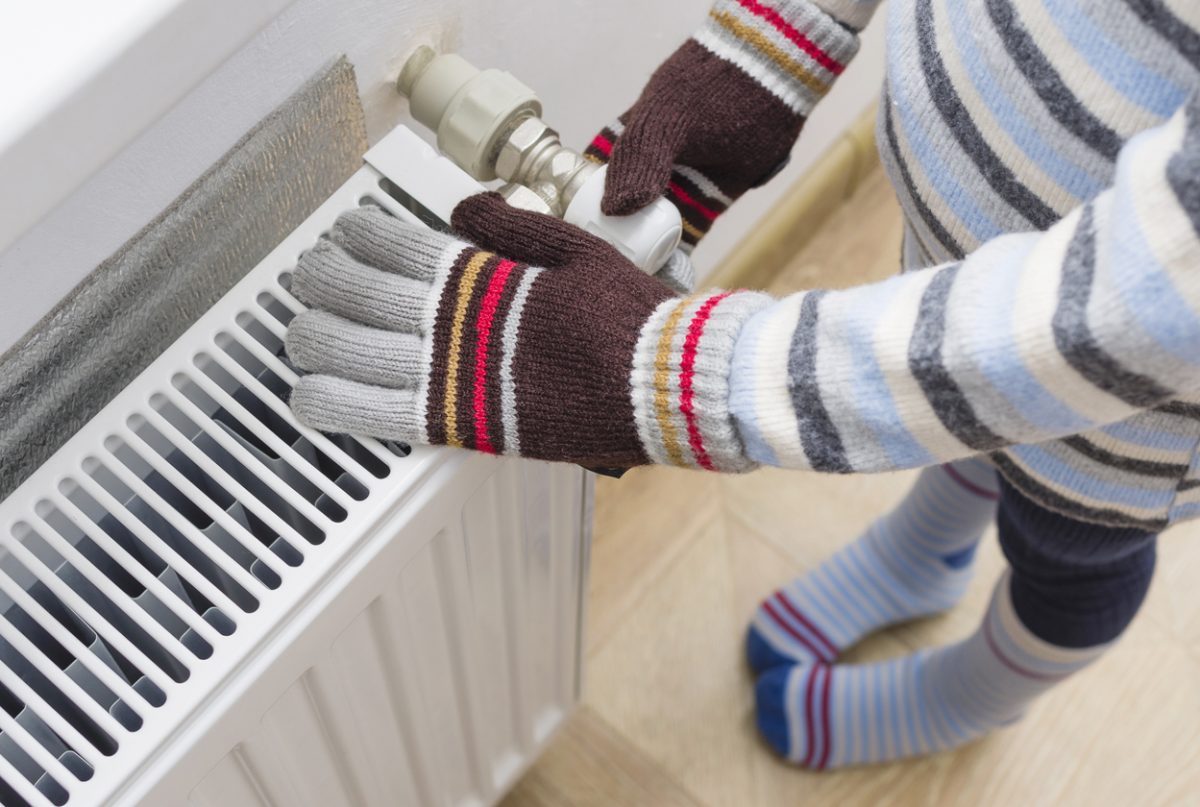
Poor energy efficiency in some of Canberra’s rentals means people don’t have a choice between keeping warm or keeping costs down. Photo: File.
One of the first things Ada Fitzgerald-Cherry’s housemate does each morning is immerse his hands in hot water.
That’s because, despite central heating, the inside of their Downer rental property averaged 13.6 degrees during winter.
“We’ve got different ways of coping,” Ada said.
“I’m going into the office more than usual because some days it’s just too cold and unpleasant to try to work from home. You can’t function work-wise.
“[If I am home], when my housemate and I emerge from our rooms, we’re both in beanies and polar fleeces, wrapped in blankets.”
Ada’s home was one of eight Canberra rental properties monitored for the Better Renting’s Cold and Costly: Renter Researchers’ Experiences of Winter 22 report.
It found ACT rentals had the country’s coldest average minimum temperature at 7.4 degrees, with an average overall temperature of 14.2 degrees.
The World Health Organisation recommended that 18 degrees was the minimum healthy indoor temperature.
Canberra’s rentals stayed below 18 degrees 88.3 per cent of the time, or more than 21 hours a day.
The coldest temperature at Ada’s home was 8.1 degrees.
“It was a lot colder than even I thought it was. It was a real eye-opener,” she said.
“There was only one occasion the [inside of the] house went over 18 degrees during the whole research period.”
Ada’s current rental property has central heating, but it didn’t appear to have adequate insulation or draught-proofing to ensure it was effective.
“The central heating works great, but you have to run it constantly. The house does not warm up at all,” she said.
“During the night, we keep the temperature at 12 or 13 degrees to keep it from getting too cold, and in the evenings, we might turn it up to 16 or 17 degrees, so it’s a bit more pleasant.”
Turning the heat up any more would place immense pressure on their budgets.
“With the temperature we’re currently using, it costs about $12.70 a day … in summer, it’s just over $3 a day,” Ada said.
“One winter we kept it toasty inside, but the bill was close to $20 a day … we can’t sustain that.
“It’s a big cost to keep the house not very warm.”
Ada said the home wasn’t just physically uncomfortable, the cold also took a mental toll.
“When you get home and it’s cold and a little damp and glum, it’s hard to engage in positive behaviours that keep good mental health,” she said.
“In the mornings, it’s so hard to get out of bed … in the evenings, instead of cooking a nice dinner, you prefer to eat a piece of toast and sit under a blanket in front of the TV because it’s warmer.”
Ada said she wasn’t “bashing landlords” but wanted to see improvements to legislation that motivated landlords to update their rental properties and make them more liveable.
“When you’re buying a home, the energy efficiency rating is always shown … there’s no requirements like that for rentals,” she said.
“When I picked my place, I saw it had central heating and thought ‘sign me up’, but I didn’t realise how exorbitant it would be to run. I may have chosen a place with no central heating but was better insulated.
“Given the tight rental market in the ACT, you don’t have much leverage or bargaining power for these types of situations … as a renter, all you can do is some dodgy, duct-taped-like solutions and no one wants to live like that.”
Better Renting executive director Joel Dignam hoped the research would be a “wake-up call” for policymakers to improve people’s health and wellbeing.
“The home is such a fundamental part of our identity and experience … when your home is cold, it’s unwelcoming,” he said.
“Newer and better-built homes still drop below 18 degrees, but that’s more at night … these are homes that aren’t just dropping below 18 degrees, they’re never even reaching it.
“Homes should be at a point where you’re still wearing fluffy socks inside, but you don’t have to be wearing a ski jacket.”
Improvements to ceiling insulation, draught sealing windows and doors, installing energy-efficient heating appliances and better window treatments (such as heavy curtains) were all ways landlords could improve the warmth and heating effectiveness of their rental properties.
Mr Dignam urged landlords to think of their tenants, and if they’d be happy living in such conditions.
“People who are lucky enough to be landlords need to take responsibility for that,” he said.
A new minimum energy efficiency standard for rental properties is due to be introduced in the ACT later this year.
Energy minister Shane Rattenbury said this would include a minimum level of ceiling insulation and would help improve energy performance, increase thermal comfort, reduce energy costs and contribute to “climate change resilience”.
“Many renters in the ACT are living in poor quality housing that is expensive to heat or cool and doesn’t meet our community’s expectation around having a suitable home to help maintain health, comfort and happiness,” he said.
“The regulation will not commence until late 2022, and requirements under the regulation will be staggered to give rental providers plenty of time to understand them and to make arrangements to comply.”
The regulation would target the “worst performing rental homes”, with about 60 per cent of properties estimated to already be compliant.
“Ceiling insulation is the first stage of implementing minimum energy performance standards for rental properties, as committed to in 2019 under the ACT Climate Change Strategy and the Parliamentary Agreement,” Mr Rattenbury said.
“In future, we will consider additional measures that could complement the ceiling insulation requirement.”
Original Article published by Claire Fenwicke on Riotact.






